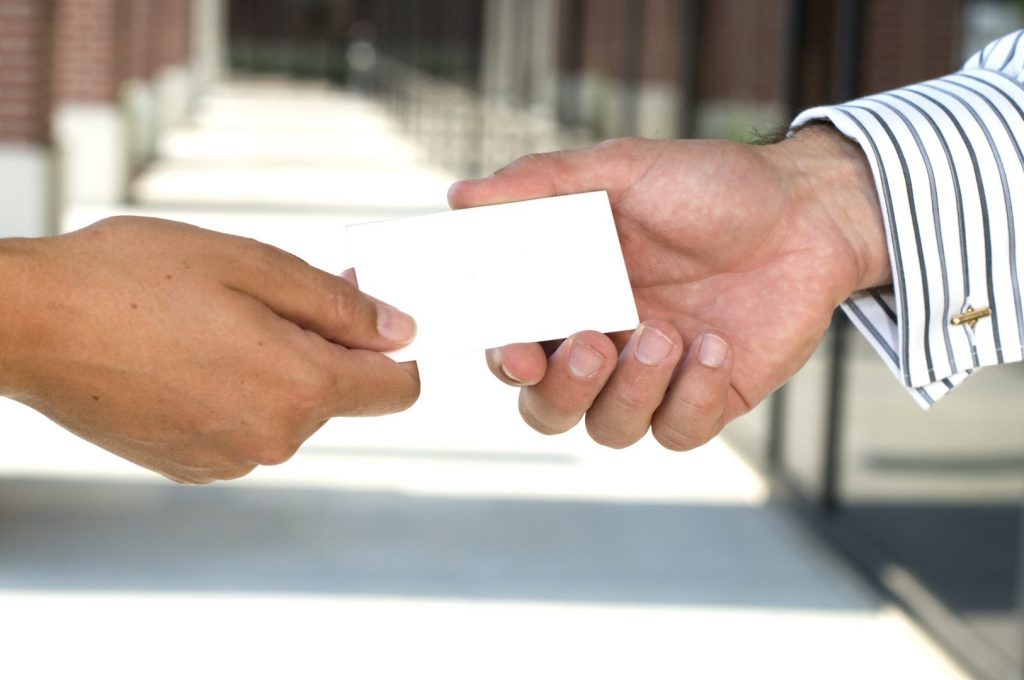
Business cards typically are handed to someone intentionally after we meet them and introduce ourselves – to convey our contact information and provide a reference point for the future
There was a time when business cards were expected to do much more than they do today, and they were relied on to perform this valuable service. While inanimate in nature, our business cards were expected to perform as our uncompensated silent salespeople – generating interest and creating leads all by themselves, Thus, there was a serious expenditure of time, effort, and money that went into creating just the right card with the look, content, and message that we wanted.
This was pre-internet days when the business card was a major way of introducing ourselves and putting something tangible in a person’s hands that would let them know who we were if they didn’t know and encourage a contact from them. Brochures also did this, but business cards could go more place for far less money – near the cash register at a restaurant, repair center, or market; on a bulletin board; at a dealership; in the grocery; in the laundromat; in the lobby of an office building; and several other places where they could just be put out and left. This is not counting all of the cards that were handed out personally or mailed.
We really did expect our business cards to perform a great marketing service for us. This is one reson we stuffed them with bulleted copy, taglines and slogans, used attractive logos and typefaces, used color liberally, added raise type or for added effect even embossed foil. The idea was to create a card that people would want to pick up – even if they had no idea what business was being represented or did not need this product or service – and more to the point, retain.
Harken back to the days of the desktop Rolodex – the large wheel or the indexed try – or the business card wallet – a storage system for business cards inserted into see-through plastic sleeves with several of them per page. When someone was searching for a business, product, or service, they started going through their filing system, and the most notable cards (color, images, size, styling, or overall look, for instance) caught their attention first. This was the point.
Because these cards predated the internet, there was no need for printing a website or email address on the card – because they didn’t exist. This meant that at least two placeholders ofn the card could be used for other purposes. Of course, toll-free numbers and fax numbers often took up this space. Toll-free numbers are still used by some businesses, and there is certainly nothing wrong in having one, but they really are mostly meaningless.
At one time, a toll-free number would encourage an out-of-area consumer to call us because they wouldn’t have to worry about incurring any long distance charges for the call or trying to keep the call under three minutes to meet the base rate criteria. Now, nearly all calling plans for landlines and cell phones include free long-distance so there is no need to pay for a toll-free number unless it just looks to the consumer like we are more responsive to their needs and more available for them.
So, what about today and how we need to use business cards now? Number one, most business cards are handed to someone from us to them after an introduction and not left in a public place just for them to pick up and take. Also, there is far less advertising copy on the card because there doesn’t need to be that much. Since we most likely will already have met the person to whom we are presenting our card, they know us. The card just conveys our contact information.
A business card should look nice, but it doesn’t have to be pretty. It is a temporary device. It carries the contact information from our hand to the person we are handing it to and then to their drawer, wallet, folder, or contact manager. It just needs to be functional!
We shouldn’t expect a long shelf life from our business cards and should not be surprised or offended if they are discarded as soon as the information on it is recorded in a contact manager. If people want to retain our cards, fine, but they don’t need to do so if they have transferred the information to a file.
Since we now are in the internet age, our card must have our website address and email contact on them. A full phone number with area code is always appropriate even if we don’t expect people to call us. Without the phone number, we have eliminated a possible form of contact, minimal as it might be for some companies.
Business cards are necessary, but they have taken on a different perspective and personality than formerly was true.
